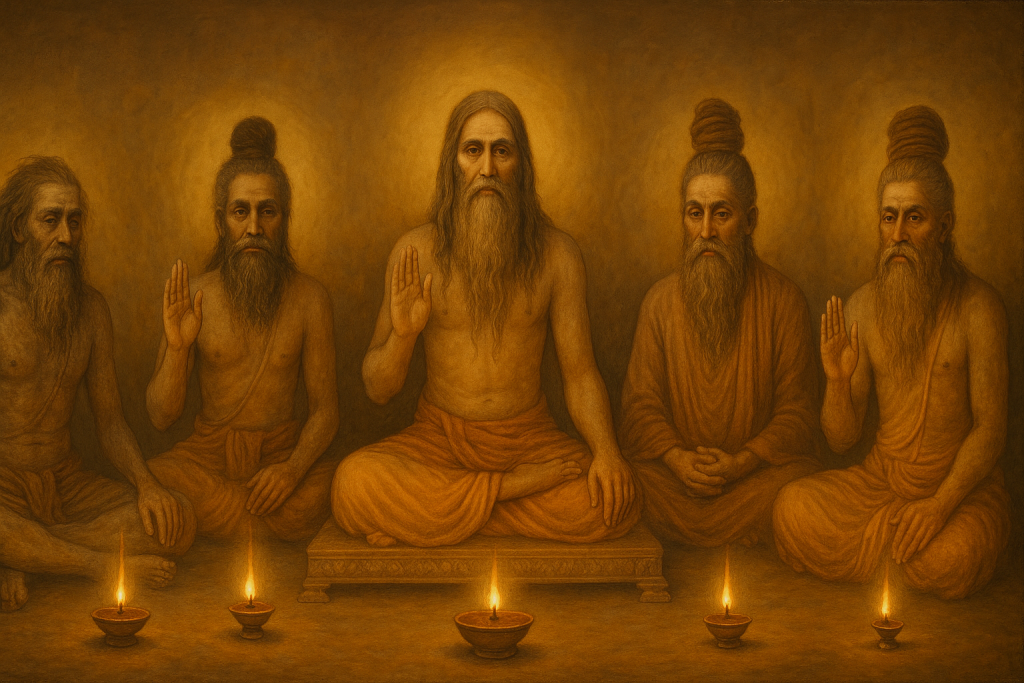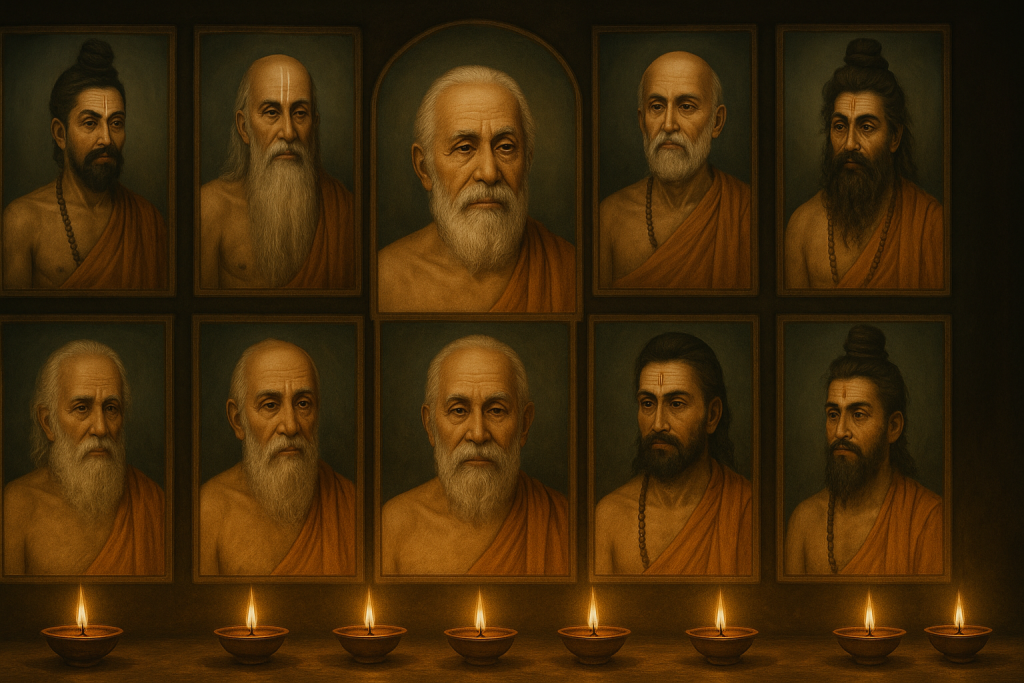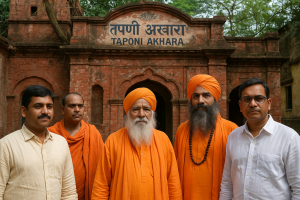Taponi Akhara, a sacred seat of spiritual discipline and yogic wisdom, has been home to some of the most revered saints in the history of Sanatan Dharma. These historical saints of Taponi Akhara were not just ascetics—they were torchbearers of divine knowledge, spiritual revolutionaries, and living embodiments of the eternal truths of Vedic wisdom.
From the earliest days of the Akhara, saints have emerged from its fold who chose lives of seclusion, intense tapasya (austerity), and unwavering devotion. Their purpose was not fame or recognition, but self-realization and service to dharma. These sages established the spiritual foundation upon which the present-day Akhara stands.
One of the most celebrated among them is Param Pujya Swami Tapovan Maharaj Ji, from whom the Akhara draws its name. Known for his unmatched austerity and silence, Swami Ji spent decades meditating in the Himalayas and the forests of central India. His presence itself was considered a blessing, and his teachings—though rare and brief—carried the force of deep inner realization. He taught that silence (maun) was the highest form of speech, and renunciation the purest path to God.
Another great figure in the lineage was Swami Advaitanand Giri Ji, a scholar-saint who played a crucial role in preserving Vedic texts and commentaries within the Akhara. His profound knowledge of Vedanta, Nyaya, and Yoga attracted disciples from across India. He advocated that true knowledge must lead to humility and inner transformation—not intellectual pride.

Swami Bhaktipradan Ji Maharaj, a saint of the 18th century, brought a devotional wave within the Taponi Akhara tradition. Through kirtans, bhakti movements, and pilgrimage outreach, he connected with the masses and emphasized a loving relationship with the Divine. He famously said, “Seva is the highest sadhana,” and spent his final years serving lepers and orphans.
These saints—though different in their approach—shared a common thread: absolute surrender to the divine, mastery over the senses, and an unwavering commitment to uplift humanity through spiritual knowledge. They lived with little, wanted nothing, and gave everything.
Their lives are not merely history—they are living legacies. Every corner of Taponi Akhara holds the fragrance of their tapasya. Their teachings continue to be studied, their stories retold in satsangs, and their presence felt in the spiritual energy that permeates the Akhara grounds.
Today’s sadhus and seekers at Taponi Akhara walk the path laid by these great souls. Their examples remind us that the journey to truth requires courage, sacrifice, and an unshakable connection with the eternal.
Honoring these historical saints is not just about remembering the past—it is about drawing strength from it. May their lives inspire all seekers to walk the path of righteousness, inner purity, and divine love.






